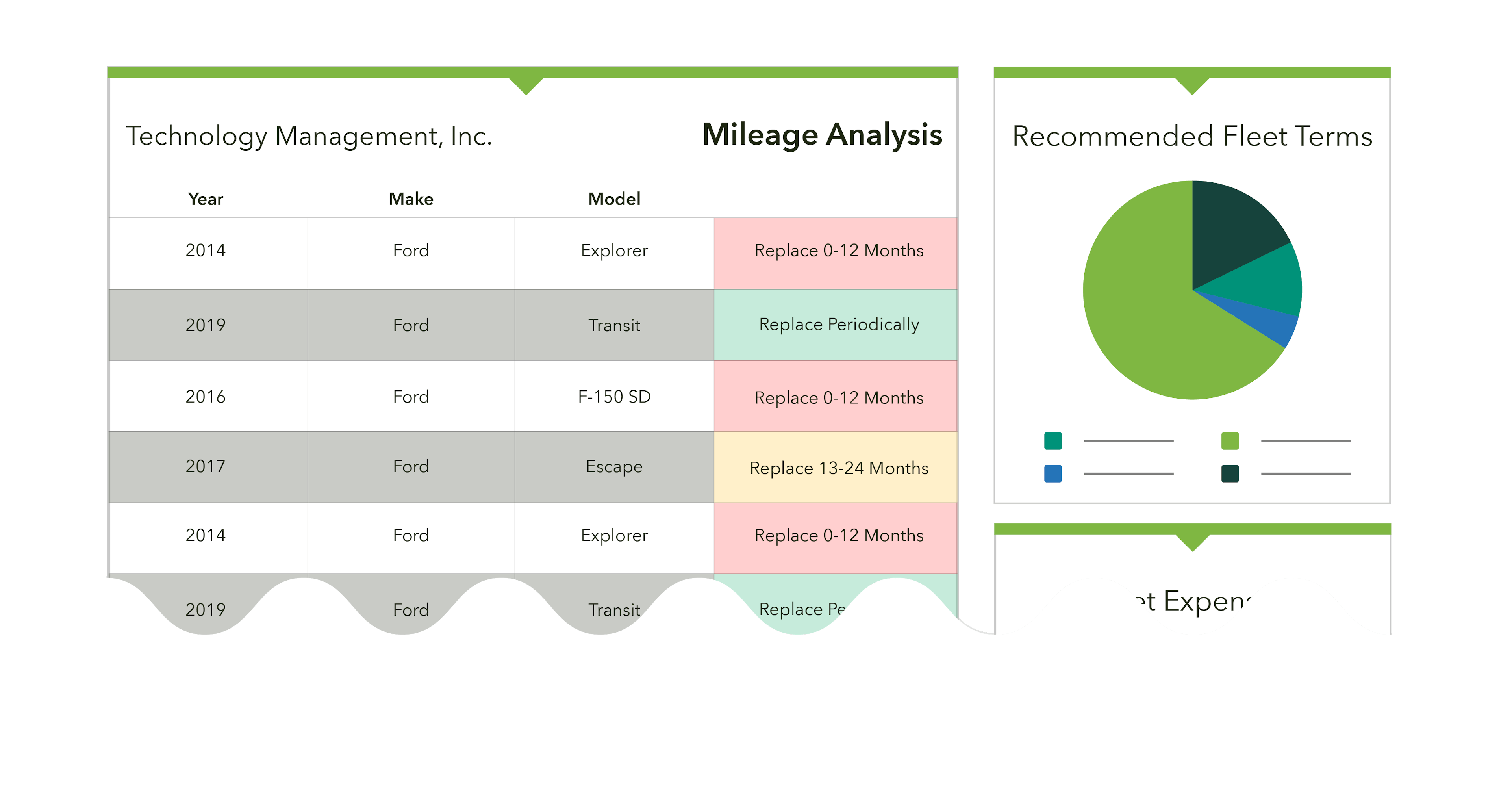
Fleet Vehicle Life Cycle Management
Vehicle Life Cycle Strategy: They Key to Controlling Fleet Total Cost of Ownership (TCO)
Implementing a proper vehicle life cycle involves cycling out a vehicle before the cost to operate it exceeds its value while strategically planning its replacement to get the lowest acquisition-cost possible. We evaluate Total Cost of Ownership (TCO) by analyzing various factors such as acquisition costs, maintenance expenses, fuel consumption, depreciation, and resale value. This enables you to experience:
Reduce Vehicle Downtime
Control Maintenance Costs
Lower Acquisition Costs
Protect & Satisfy Drivers
Improve Fuel Efficiency
Get a clear picture of your TCO and health of your fleet.
Step 1. Vehicle Life Cycle Analysis
At Mike Albert Fleet Solutions, we recognize that every fleet has its own unique needs, which is why we steer clear of generic, off-the-shelf plans. Our clients make informed decisions that minimize life cycle costs and maximize ROI by evaluating important factors such as:
- Vehicle acquisition costs
- Depreciation
- Maintenance expenses
- Fuel consumption
- Resale value
- Short- and long-term corporate goals
- Funding requirements
- And more
Our TCO optimization programs provide clients with actionable insights to optimize fleet composition, replacement cycles, and financing strategies.
Step 2: Red, Yellow, Green Assessment
We tap into our propriety data set and bench marks, then analyze every unit’s data and usage requirements compared to similar fleet profiles to develop a visual health assessment of your fleet. Data points include:
- Highest Mileage
- Average Mileage
- Annual Maintenance
- Historic Maintenance
- Make / Model Benchmarks
- And more

Life Cycle Tip
Anticipate a 10-15% increase in the cost to replace a vehicle with a similar model at the end of its five-year life cycle. Remember that some vehicle models may no longer be available, impacting your future budget further.